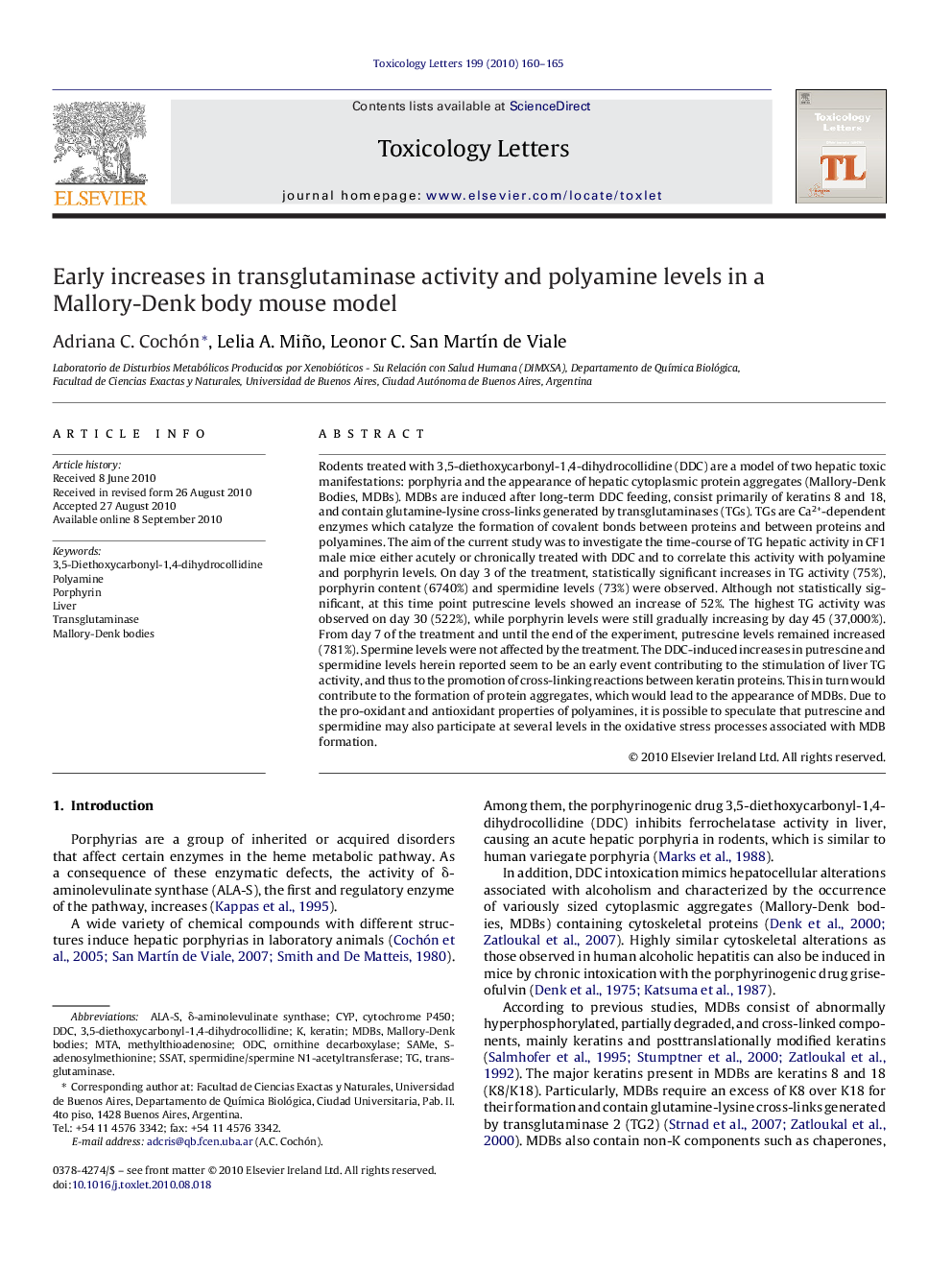| Article ID | Journal | Published Year | Pages | File Type |
|---|---|---|---|---|
| 2600036 | Toxicology Letters | 2010 | 6 Pages |
Rodents treated with 3,5-diethoxycarbonyl-1,4-dihydrocollidine (DDC) are a model of two hepatic toxic manifestations: porphyria and the appearance of hepatic cytoplasmic protein aggregates (Mallory-Denk Bodies, MDBs). MDBs are induced after long-term DDC feeding, consist primarily of keratins 8 and 18, and contain glutamine-lysine cross-links generated by transglutaminases (TGs). TGs are Ca2+-dependent enzymes which catalyze the formation of covalent bonds between proteins and between proteins and polyamines. The aim of the current study was to investigate the time-course of TG hepatic activity in CF1 male mice either acutely or chronically treated with DDC and to correlate this activity with polyamine and porphyrin levels. On day 3 of the treatment, statistically significant increases in TG activity (75%), porphyrin content (6740%) and spermidine levels (73%) were observed. Although not statistically significant, at this time point putrescine levels showed an increase of 52%. The highest TG activity was observed on day 30 (522%), while porphyrin levels were still gradually increasing by day 45 (37,000%). From day 7 of the treatment and until the end of the experiment, putrescine levels remained increased (781%). Spermine levels were not affected by the treatment. The DDC-induced increases in putrescine and spermidine levels herein reported seem to be an early event contributing to the stimulation of liver TG activity, and thus to the promotion of cross-linking reactions between keratin proteins. This in turn would contribute to the formation of protein aggregates, which would lead to the appearance of MDBs. Due to the pro-oxidant and antioxidant properties of polyamines, it is possible to speculate that putrescine and spermidine may also participate at several levels in the oxidative stress processes associated with MDB formation.
